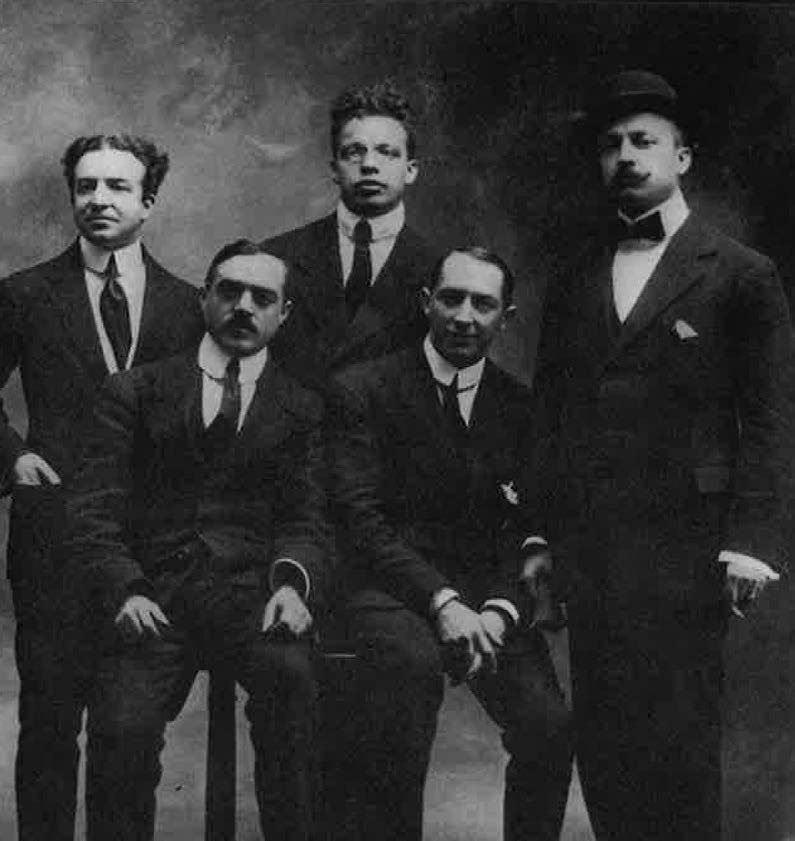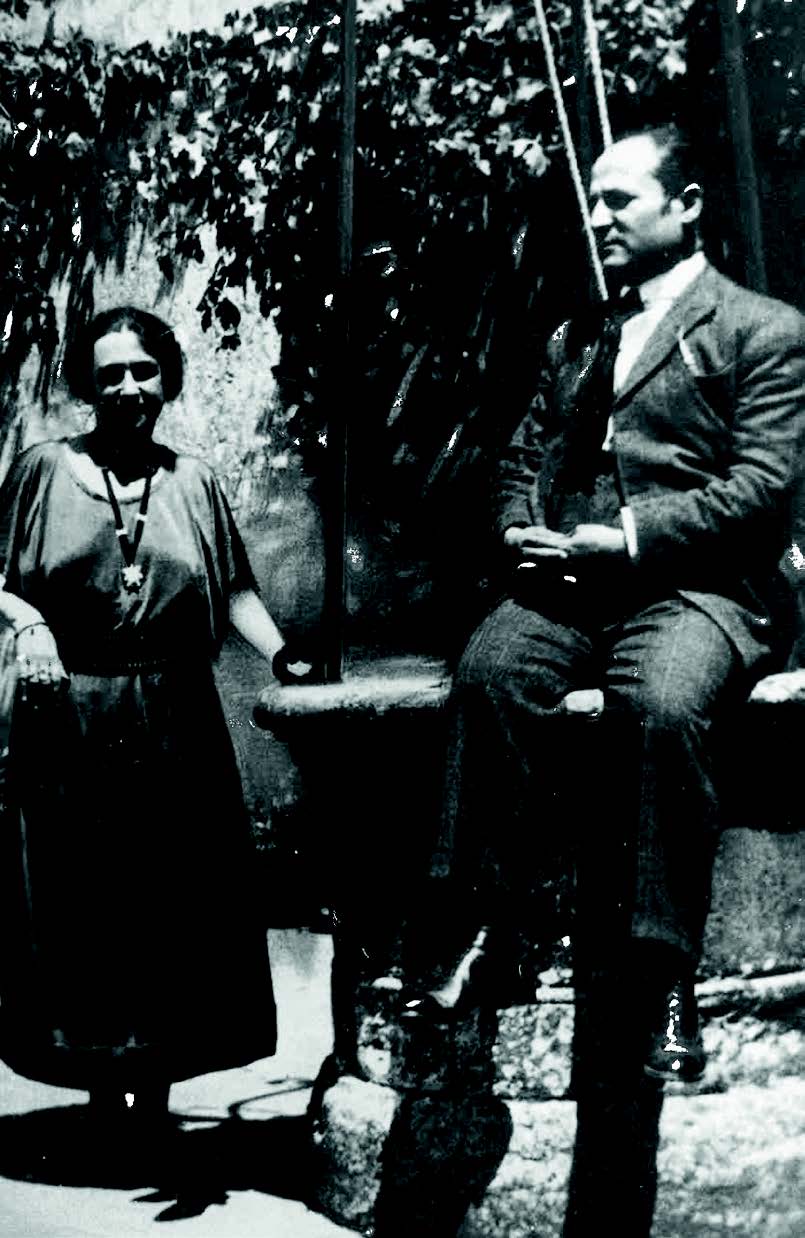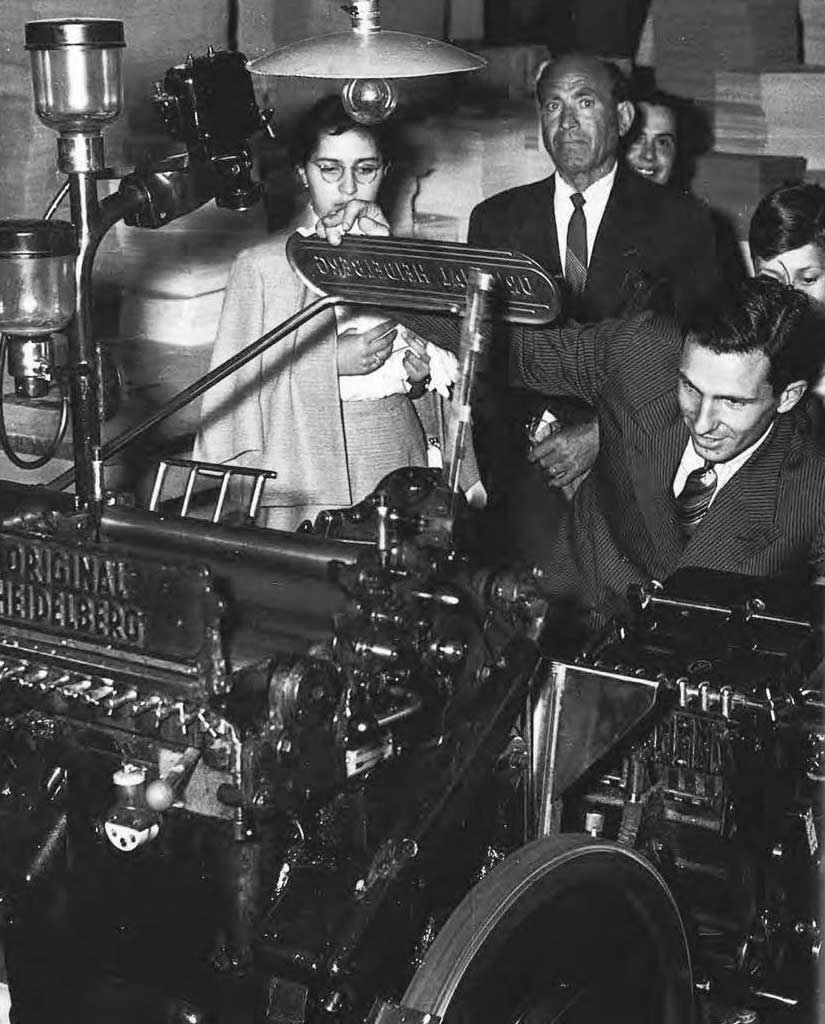Vallecchi Firenze
Publishing House
Founded in Florence (1913) by Attilio Vallecchi, the publishing house Vallecchi Firenze is one of the most prestigious and renowned publishing houses in Italy.
The Treccani encyclopedia states that “Attilio (Florence 1880 – ibid. 1946) established the homonymous publishing house in Florence (1913), through the friendship and collaboration of some Florentine writers, including G. Papini and A. Soffici”.
For a better understanding of how one of Italy’s most significant publishing adventures began, we need to take a step back in time.

Above: the photo (1914) portrays the “futurist group” (as Giovanni Papini called it). Standing, from the left: Aldo Palazzeschi, Giovanni Papini, Filippo Tommaso Marinetti. Seated: Carlo Carrà and Umberto Boccioni.
In 1903, Attilio Vallecchi, a simple worker in a Florentine print shop, at just twenty-three years of age, saved a small printing works in Florence from bankruptcy. That same year, the periodicals Leonardo and Il Regno were printed under the name Stabilimento tipografico della Biblioteca di cultura liberale (the Liberal Culture Library printing works).

Attilio Vallecchi with his wife Pia.
These were followed by the cultural magazine La Voce, founded by G. Prezzolini (1908). In 1913, Attilio decided to finance and print the literary magazine Lacerba and the editions of the Libreria della Voce, in which volumes and ‘journals’ of both a historical-critical and creative nature were published. The magazine Lacerba became a focal point for the greatest exponents of Italian literature of the twentieth century.
The Vallecchi Editore trade name appears for the first time in a letter to Giovanni Papini dated 14 July 1919, where Attilio officially announced the birth and programmes of his company. From that moment on came a constant series of titles, magazines, journals and editions of various kinds by authors representing a large part of the Italian culture of the time: Malaparte, Prezzolini, Martinetti, Soffici, Palazzeschi, Bargellini, Campana, Papini, Paolieri, Ungaretti and many others.
The Vallecchi catalogue thus became the catalogue par excellence for Italian writers aspiring to make a prestigious debut.
In 1931, to attract new readers, he published Biblioteca Vallecchi, one of the first three-lire affordable series that brought works of literature and biographies from Stendhal to Dickens and Dostoevsky to Italian homes until the 1950s, in a neat, elegant design, with cardboard binding and a colour dust jacket.
Attilio therefore has the merit of helping to create the underlying climate and premises of Italian culture of the last century and participating in the construction and dissemination of our country’s culture, art and customs.
1948 – Roma, Caffè Greco. From left to right: Aldo Palazzeschi, Goffredo Petrassi, Mirko Basaldella, Carlo Levi, Pericle Fazzini, (standing), Afro Basaldella, Renzo Vespignani, Libero De Libero, Dandro Penna (standing), Lea Padovani, Orson Welles, Mario Mafai, Ennio Flaiano, Vitaliano Brancati, Orfeo Tamburi (in the middle).

Today, Manlio Maggioli, a well-known entrepreneur – whose career path happens to be similar to that of Attilio – wants to relaunch the Vallecchi trade mark with the same conviction, enthusiasm and vitality with which Attilio started his business in the early twentieth century, convinced that culture is an essential value for a civil society.
The Maggioli family, moreover, has always made knowledge and technology their leitmotif, founding Maggioli publishers in the 1970s – which rapidly became a leader in the field of publications for professionals and local authorities – and creating new companies that develop products and services to support digitisation and process innovation in both the public and private sectors.
For some years now, with the Maggioli Cultura brand, the Group has been providing a wide range of services for organisations and institutions aimed at appreciation of the artistic and cultural heritage of Italy:
- design, planning and creation of museums and exhibitions, including multimedia;
- promotion;
- integrated communication and training.
The Group employs over 2,000 internal resources and has 40 branches in Italy and abroad.
For 2020, Vallecchi’s publishing plan includes new editions of works by great authors of the historic publishing house, together with the publication of new titles, with the specific aim of remaining faithful to the brand’s image in terms of both appearance and content: books on history, philosophy and art, fiction and children’s books, which, we are sure, will meet the approval of those seeking new inspiration in reading.

Manlio Maggioli.


